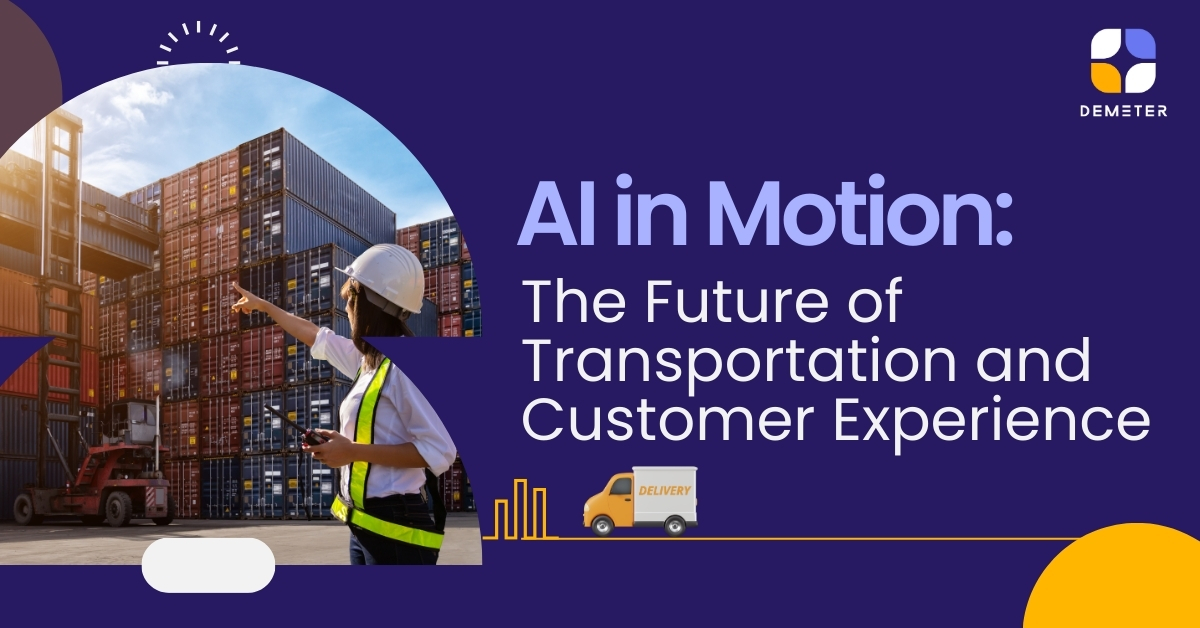The way we move people and goods is changing fast, and artificial intelligence (AI) is leading the charge. Whether it’s optimizing logistics, reducing delays, or making travel safer and more efficient, AI is helping the transportation industry evolve in ways we never imagined.
But AI in transportation isn’t just about self-driving cars. It’s also powering real-time decision-making, predictive analytics, and automated customer support, helping businesses streamline operations while enhancing the overall customer experience. Companies that embrace AI are seeing lower costs, increased efficiency, and happier customers—all without the headaches of traditional, manual processes.
Let’s explore the role AI is playing in shaping the future of transportation, the biggest benefits it brings, and how Zendesk AI is helping businesses elevate their customer support in this fast-moving industry.
The Impact of AI on Transportation
AI is no longer an experimental technology—it’s now an essential part of how modern transportation systems function. It’s making vehicles smarter, logistics more efficient, and public transit more reliable. For example, AI-driven predictive maintenance can detect mechanical issues before they become major problems, reducing breakdowns and costly delays. AI also plays a major role in traffic management, helping fleets and ride-sharing services optimize routes and avoid congestion.
Beyond logistics, autonomous vehicles are quickly becoming a reality, with self-driving trucks and taxis improving navigation and safety. Meanwhile, public transportation systems are using AI to analyze commuter data, improve scheduling, and offer better travel experiences. And in customer service, AI-powered chatbots and virtual assistants are helping transportation companies provide instant support to travelers and businesses alike.
These innovations are making transportation faster, safer, and more customer-friendly, with AI working quietly behind the scenes to keep everything running smoothly.
How AI is Improving Transportation for Businesses and Customers
AI is transforming transportation in ways that benefit both businesses and the people who rely on these services daily. One of the most significant advantages is safety. AI-powered monitoring systems can detect driver fatigue, risky behavior, and potential hazards, reducing accidents on the road. Predictive analytics also play a crucial role in maintenance, preventing unexpected failures and minimizing downtime.
Cost efficiency is another major advantage. AI helps companies reduce fuel consumption, optimize vehicle usage, and lower operational expenses. Logistics companies are using AI to plan smarter delivery routes, reducing mileage and maximizing efficiency.
For customers, AI means better service. AI-driven customer support tools, such as Zendesk AI, help transportation businesses provide instant answers to common questions, assist with bookings, and offer real-time updates on delays or cancellations. This level of automation ensures that customers receive faster, more reliable support without long wait times or frustrating back-and-forth exchanges.
Zendesk AI: A Smarter Approach to Customer Support in Transportation

The role of AI in transportation isn’t just about smarter navigation or logistics—it’s also about enhancing the customer experience. Zendesk AI helps transportation companies automate customer support, improve communication, and handle service inquiries more efficiently.
Zendesk’s AI-driven chatbots provide round-the-clock customer assistance, answering frequently asked questions, processing ticket bookings, and offering real-time updates on schedules and disruptions. AI-powered automation reduces response times, ensuring that customers get the help they need, exactly when they need it.
Another key advantage is predictive customer assistance. Instead of waiting for customers to ask about delays or service interruptions, Zendesk AI can proactively send alerts, keeping passengers informed and reducing frustration. With multilingual support, transportation businesses can easily serve global customers, eliminating language barriers and improving accessibility.
Zendesk’s seamless integration with GPS systems, ticketing platforms, and logistics tools allows businesses to pull real-time data into their support channels, making it easy to deliver accurate, up-to-the-minute information to customers.
What’s Next for AI in Transportation?
AI is only getting started. In the near future, expect to see more advanced traffic management systems, hyper-personalized travel experiences, and even broader adoption of autonomous vehicles. Companies will increasingly rely on AI for sustainability efforts, using smart traffic control and fuel optimization to reduce emissions and lower environmental impact.
The ability to predict demand and allocate resources accordingly will also become more refined, ensuring that businesses run more efficiently while offering travelers a smoother, more tailored experience.
Final Thoughts: The Future is AI-Powered
The transportation industry is evolving rapidly, and businesses that leverage AI are setting themselves up for long-term success. AI isn’t just making travel and logistics more efficient—it’s creating safer roads, more cost-effective operations, and a better experience for customers.
For transportation companies looking to stay ahead, AI-powered solutions like Zendesk can help simplify customer service, improve response times, and keep travelers informed at all times.
Want to see how Zendesk AI can transform your transportation business? Discover how AI-driven automation can help you deliver smarter, faster, and more seamless customer support today.
Find out more today

WeChat: demeter-ict






